
Ornatus-Mundi
[Zenith]
7136

PoT 2014: Visit at dial-maker Fehr & Cie S.A. (official report (i))
On the 8th and 9th of October a small group of lucky fellows had the opportunity to participate in a PoT (PuristS on Tour). The first day we was hosted by Hublot, who offered us an insightful factory tour, an interesting wine tasting experience and an exceptional private dinner with Monsieur Jean-Claude Biver, accompanied by his wife Sandra. You'll find reports in the appropriate forum.
The schedule of the second day of the PoT was programmed by Zenith, that offered us two in-depth factory tours, one each at Fehr & Cie S.A. in La Chaux-de-Fonds (dial maker) and - of course - at the historical Manufacture Zenith. This exceptional day was happily ended with a private dinner at a typical Swiss Jury-style Restaurant.
Here, we present our impressions on this excellently organised day. We, that are Magnus Bosse (ornatus-mundi) and Elio Pascucci (heartbreaker).
So, we are in La Chaux-de-Fonds, that in 2009 has been entered (with Le Locle) in the UNESCO World Heritage List. I think that a brief description of the motivation of this important achievement is quite interesting, so I'd like to attach the following information, from the Unesco web site.
"La Chaux-de-Fonds / Le Locle, Watchmaking Town PlanningThe site of La Chaux-de-Fonds / Le Locle watchmaking town-planning consists of two towns situated close to one another in a remote environment in the Swiss Jura mountains, on land ill-suited to farming. Their planning and buildings reflect watchmakers’ need of rational organization. Planned in the early 19th century, after extensive fires, the towns owed their existence to this single industry. Their layout along an open-ended scheme of parallel strips on which residential housing and workshops are intermingled reflects the needs of the local watchmaking culture that dates to the 17th century and is still alive today. The site presents outstanding examples of mono-industrial manufacturing-towns which are well preserved and still active. The urban planning of both towns has accommodated the transition from the artisanal production of a cottage industry to the more concentrated factory production of the late 19th and 20th centuries. The town of La Chaux-de-Fonds was described by Karl Marx as a “huge factory-town” in Das Kapital where he analyzed the division of labour in the watchmaking industry of the Jura."

Along the route to the Fehr manufacture we've seen various hints indicating that we indeed found our way into the Watch Valley: Tag Heuer, Greubel&Forsey, Jacquet Droz and Patek Philippe (these last two very close to the Fehr building).




It gets even better: the street where Fehr S.A. is situated is aptly called ‘Allée du Tourbillon’…
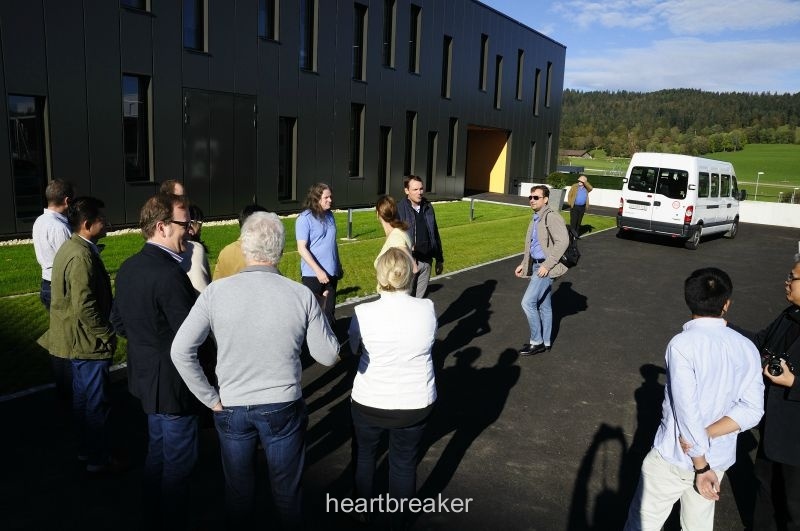
Upon arrival at the Fehr premises we received a cordial welcome by Monsieur Romain Marietta, Product Manager at Zenith.
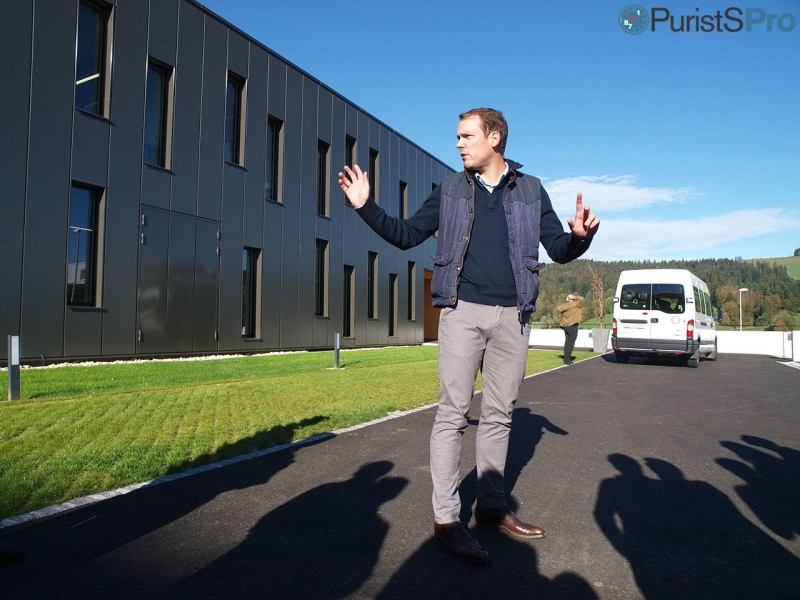
Mr. Marietta stems from the family of watchmakers and specialists in associated trades, so it was not a circumstantial fact that he excellently has taken care of us, during all the day, until late in the night!

Finally, first steps into the holy halls of Fehr S.A.: The building was recently erected, and we were one of the first – if not the first – group to pay a visit there. Everything was clean, spacious and smelled new. At this point, one was barely prepared for the brute forces and noises which were just a few doors away…

Immediately we are greeted by a very tempting and promising sign:

What do you expect to find entering a dial maker manufacture? Dial making machines, obviously! These ones are 'well-experienced, and wait for their installation and "mise en service" once all preparations are completed:
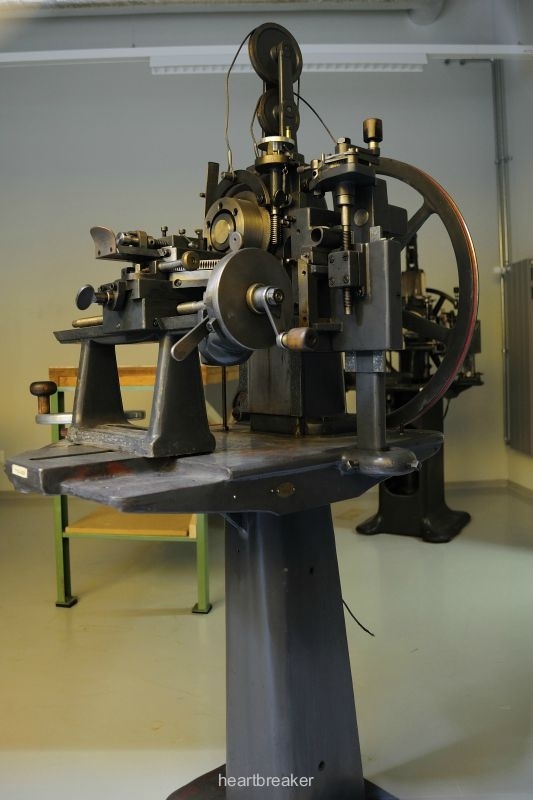

But first... precision work requires cleanliness, and thus we had to dress up before we could take another step…

Monieur Patrice Luthi himself, owner and CEO of Fehr S.A. welcomed us and offered to guide us himself. Quite an honour for us, but it certainly also shows the level of appreciation Purists enjoy!


Well, let's start the factory tour; we’re sorry in case we’ve tired you.

The first visited department is the one named "Mécanique générale" or 'general mechanical department'. Dial-making seems a delicate task considering the small area filled with an astounding variety of miniscule design elements and finishing touches. Take a close look, the dial is very familiar to many here, even your spouses (we are just guessing ;-)). We will meet it over again as it nears its completion!

However, “all beginnings are difficult!” – as a German proverb says (actually, that works much better in German than in English, as the Germans have no problems intermixing ‘schwierig’ (difficult) and ‘schwer’ (heavy)). Thus: Heavy, heavy stuff is what marks the beginning of each and every watch face, accompanied but a matching level of bumping noise from the several tons of pressure each stamp executes. These stamps mould the dial "plaquettes" from a solid piece of rolled brass.

So, Mr Luthi poits to a machine of impressive posture and a noise level to match:

These are stamps able to exert several tons of pressure on brass sheets to produce the initial dial blanks:




These are fearsome monsters, but their output is reassuringly delicate: Stamping tools, individually precisely manufactured for each type if dial, preform a future dial already with remarkable precision and fit:


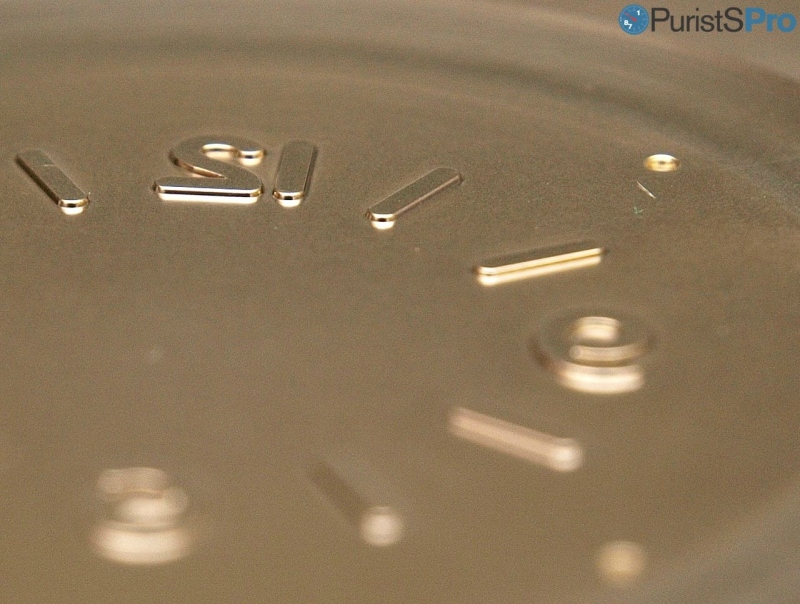
What we found remarkable is how deep the vertical integration is just with this rather rough first step: Many dials look almost finished in terms of metal work, missing only what needs to be applied (indices, colours, prints). This is not the case however (see further down), but still it's striking what a mould can do!

The pictures should talk for themselves, probably you'll recognise more than one dial at their very early production stage.




Stamping of course exerts immense amounts of pressure on a relatively thin material. This has the consequence that internals strains and pressures built up which need to be eliminated before any further handling can ensue. Otherwise, dials might deform and would have to be discarded.
The usual way to get rid of such strains is to subject raw dials to heat, and this is the way Fehr has chosen as well. We saw the same process later at Zenith’s movement production as well!



The lady working here obviously liked her job…

After exorcising all that bad karma the dial blanks have to be ground to their final thickness as specified by the respective customer brand. This is task of yet another group of technicians and is a decisive and surprisingly delicate step.


To ensure that material is taken away evenly and without distorting the dial, again special mould are prepared, exactly fitting each dial type, which are used to mount the blanks in the lathe.
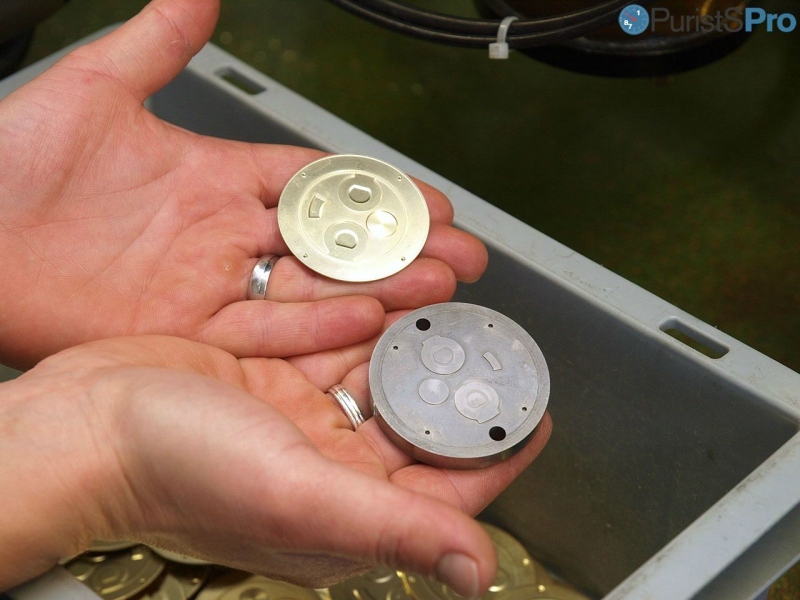
Only then the process begins:

Here is an example which shows the front and the back, after thinning:

Obviously, the people at Fehr S.A. are hard at work!

After this rather powerful first part we consecutively entire more refined areas – more in the next (=follow-up) post!
More posts:

PoT 2014: Visit at dial-maker Fehr & Cie S.A. (official report (i))
On the 8th and 9th of October a small group of lucky fellows had the opportunity to participate in a PoT (PuristS on Tour). The first day we was hosted by Hublot , who offered us an insightful factory tour, an interesting wine tasting experience and an ex...

PoT 2014: Visit at dial-maker Fehr & Cie S.A. (official report (ii))
After the "Mécanique Générale" department, we would like to invite you to follow us through two breathtaking departments: "Guillochage" and "Polissage" . Here is probably what watch enthusiasts cherish most – hand-made dials created using traditional tech...

A beautiful dial, the skills needed and the difficulties to produce them ...
are quite often underestimated. Too often we talk about complications , but talk about complicated movements only. To visit a dial factory/workshop is something very special and quite often it feels like to be in the kitchen of a witch, because of the "ma...

Yes, Oliver, these are aspects we all too often take for granted!
Dials, like case or hands, are often judged only after their aesthetic qualities, everything beyond that is not appreciated. From our own discussions, Oliver, we two learned a lot about the subtle details which make a dial (case, hand, strap...) outstandi...

The "magic" of a dial factory
Thank you Oliver for your words, that add a lot to the discussion. Room after room and department after department, I've had exactly the same feeling you’ve described. Yes, almost all of the manual work is a bit repetitive, but the output is new every day...

Thanks for the great report Magnus & Elio!
Did they let you keep any unfinished stamped dials as souvenirs to keep? :) Cheers, Anthony

Well, Anthony, you have to know that…
…when Monsieur Luthi have heard that in the visiting group there was an Italian, he made himself a bit rigid and turned his eyes around thinking <<Hey man, you’re in trouble, take a closer look at those looong Italian hands>>. ;-) But my hands...

Fantastic report
As many of us are interested in knowing how mechanics work, the making of dials is also something we love learning about. Thanks a lot for the work and the time needed to make those reports, both of you guys. Cheers, Mark

I think dial and case-works are often under appreciated. We so much love...
complications and movement finishing, but so often forget about what we (and others) see mostly. Thanks, Magnus

indeed, I was even told more than once that …
the case and bracelet of a standard AP RO is more expensive than the movement And we're talking about an AP movement, a well finished AP movement, not a 100 USD slightly modified ETA The RO is known for it's special case and ditto bracelet … I wouldn't be...

"RO is known for it's special case and ditto bracelet"
I agree and you didn´t even mention the Nautilus case, which is even more pricey to do.

Maybe, we should hope for a better info from the Maisons?
Thank you Mark for your kind words. As for learning about dial-making, I think that the Maisons could adopt a better communication. Better in sense of a greater transparency on the dial characteristics, being it a plain one or an elaborate one, telling us...

Elio
I think the manufactures prefer to keep this info for themselves About 10 years ago the 'in-house movement' hype started At the end several brands were almost forced to start making an own in-house movement because a big group of clients asked for 'in-hou...

Métalem ?
About 2 yours ago I also visited Zenith and a dial maker but it was called Métalem I believe. Is this the same company ? Mr Marietta also joined us … I thought Métalem belonged to his family ( but I could be wrong) Thanks for the report, brings back great...

No, Métalem is a separate company (located in Le Locle), but it also....
produces dials for Zenith. As for Mr Marietta, mmmh, perhaps his father works for Métalem? I'll try to find out! Best, Magnus